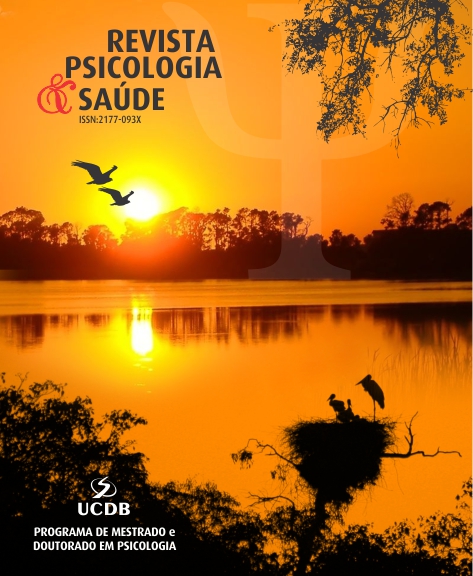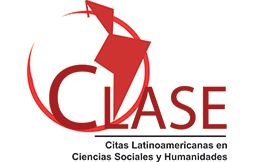Risk of Sarcopenia in Older People: Association with Illiteracy and Negative Self-Perception of Health
DOI:
https://doi.org/10.20435/pssa.v1i1.2842Keywords:
sarcopenia, self-perceived health, education, elderly healthAbstract
This study aimed to evaluate the association between sociodemographic conditions, behavioral and health habits and the risk of sarcopenia in elderly individuals. A cross-sectional study was conducted with 277 elderly individuals assisted at a referral center in Montes Claros, MG, Brazil. The risk of sarcopenia was assessed using the SARC-F questionnaire. Sociodemographic, behavioral and health perception aspects were assessed. Crude and adjusted prevalence ratios and 95% confidence intervals were calculated using Poisson regression with robust variance. It was observed that 48.4% (n=134) of the participants were at risk of sarcopenia. After adjustment, being illiterate (PR=1.49; 95% CI: 1.16–1.91) and having poor self-perceived health (PR=1.50; 95% CI: 1.06–2.14) were aspects associated with the risk of sarcopenia. A high prevalence of elderly individuals at risk of sarcopenia was found, associated with low education and poor self-perception of health. These findings highlight the importance of studies on sarcopenia in addition to the implementation of preventive strategies for the elderly population.
References
Aibar-Almazán, A., Martínez-Amat, A., Cruz-Díaz, D., Jiménez-García, J. D., Achalandabaso, A., Sánchez-Montesinos, I., De la Torre-Cruz, M., & Hita-Contreras, F. (2018). Sarcopenia and sarcopenic obesity in Spanish community-dwelling middle-aged and older women: Association with balance confidence, fear of falling and fall risk. Maturitas, 107, 26–32. https://doi.org/10.1016/j.maturitas.2017.10.001 DOI: https://doi.org/10.1016/j.maturitas.2017.10.001
Andrade, R. A. R., Meireles, A. C. N., Almeida, A. A. G., & Amaral, R. C. (2021). Acesso para pacientes com necessidades especiais nos CEOs de Sergipe. Research, Society and Development, 10(3), e56610313829. https://doi.org/10.33448/rsd-v10i3.13829 DOI: https://doi.org/10.33448/rsd-v10i3.13829
Bahat, G., Tufan, A., Kilic, C., Karan, M. A., & Cruz-Jentoft, A. J. (2020). Prevalence of sarcopenia and its components in community-dwelling outpatient older adults and their relation with functionality. Aging Male, 23(5), 424–430. https://doi.org/10.1080/13685538.2018.1511976 DOI: https://doi.org/10.1080/13685538.2018.1511976
Bann, D., Wills, C. R., Adams, K., & Kuh, D. (2014). Socioeconomic position across life and body composition in early old age: Findings from a British birth cohort study. Journal of Epidemiology & Community Health, 68(6), 516–523. https://doi.org/10.1136/jech-2013-203373 DOI: https://doi.org/10.1136/jech-2013-203373
Barbosa-Silva, T. G., Menezes, A. M., Bielemann, R. M., Malmstrom, T. K., Gonzalez, M. C., & Grupo de Estudos em Composição Corporal e Nutrição (COCONUT). (2016). Enhancing SARC-F: Improving sarcopenia screening in the clinical practice. Journal of the American Medical Directors Association, 17(12), 1136–1141. https://doi.org/10.1016/j.jamda.2016.08.004 DOI: https://doi.org/10.1016/j.jamda.2016.08.004
Batsis, J. A., Mackenzie, T. A., Emeny, R. T., Lopez-Jimenez, F., & Bartels, S. J. (2017). Low lean mass with and without obesity, and mortality: Results from the 1999–2004 National Health and Nutrition Examination Survey. Journal of Gerontology: Biological Sciences and Medical Sciences, 72(10), 1445–1451. https://doi.org/10.1093/gerona/glx031 DOI: https://doi.org/10.1093/gerona/glx002
Brennan-Olsen, S. L., Vogrin, S., Balogun, S., Wu, F., Scott, D., Jones, G., Hayes, A., Phu, S., Duque, G., Beauchamp, A., Talevski, J., Naureen, G., & Winzenberg, T. M. (2020). Education, occupation and operational measures of sarcopenia: Six years of Australian data. Australasian Journal on Ageing, 39(4), e498–e505. https://doi.org/10.1111/ajag.12816 DOI: https://doi.org/10.1111/ajag.12816
Caetano, G. M., Santos Neto, A. P., Santos, L. S. C., & Fhon, J. R. S. (2023). Risco de quedas e seus fatores associados na pessoa idosa hospitalizada. Revista Brasileira de Geriatria e Gerontologia, 26, e230155. https://doi.org/10.1590/1981-22562023026.230155.pt DOI: https://doi.org/10.1590/1981-22562023026.230155.en
Chagas, C. S., Ohara, D. G., Matos, A. P., Oliveira, M. S. R., Lopes, M. G. R., Marmo, F. A. D., Pinto, A. C. P. N., & Pegorari, M. S. (2021). Associação entre sarcopenia e qualidade de vida relacionada à saúde em idosos comunitários. Acta Paulista de Enfermagem, 34, eAPE002125. https://doi.org/10.37689/acta-ape/2021AO002125 DOI: https://doi.org/10.37689/acta-ape/2021AO002125
Chen, H., Ma, J., Liu, A., Cui, Y., & Ma, X. (2020). The association between sarcopenia and fracture in middle-aged and elderly people: A systematic review and meta-analysis of cohort studies. Injury, 51(4), 804–811. https://doi.org/10.1016/j.injury.2020.02.072 DOI: https://doi.org/10.1016/j.injury.2020.02.072
Chen, Z., Ho, M., & Chau, P. H. (2022). Prevalence, incidence, and associated factors of possible sarcopenia in community-dwelling Chinese older adults: A population-based longitudinal study. Frontiers in Medicine, 8, 769708. https://doi.org/10.3389/fmed.2021.769708 DOI: https://doi.org/10.3389/fmed.2021.769708
Cho, M. R., Lee, S., & Song, S. K. (2022). A review of sarcopenia pathophysiology, diagnosis, treatment and future direction. Journal of Korean Medical Science, 37(18), e146. https://doi.org/10.3346/jkms.2022.37.e146 DOI: https://doi.org/10.3346/jkms.2022.37.e146
Choo, Y. J., & Chang, M. C. (2021). Prevalence of sarcopenia among the elderly in Korea: A meta-analysis. Journal of Preventive Medicine and Public Health, 54(2), 96–102. https://doi.org/10.3961/jpmph.21.046 DOI: https://doi.org/10.3961/jpmph.21.046
Confortin, S. C., Giehl, M. W. C., Antes, D. L., Schneider, I. J. C., & d'Orsi, E. (2015). Autopercepção positiva de saúde em idosos: Estudo populacional no Sul do Brasil. Cadernos de Saúde Pública, 31(5), 1049–1060. https://doi.org/10.1590/0102-311X00132014 DOI: https://doi.org/10.1590/0102-311X00132014
Cruz-Jentoft, A. J., Bahat, G., Bauer, J., Boirie, Y., Bruyère, O., Cederholm, T., Cooper, C., Landi, F., Rolland, Y., Sayer, A. A., Schneider, S. M., Sieber, C. C., Topinkiva, E., Vandewoude, M., Visser, M., & Zamboni, M. (2019). Sarcopenia: Revised European consensus on definition and diagnosis. Age and Ageing, 48(1), 16–31. https://doi.org/10.1093/ageing/afy169 DOI: https://doi.org/10.1093/ageing/afz046
Dent, E., Morley, J. E., Cruz-Jentoft, A. J., Arai, H., Kritchevsky, S. B., Guralnik, J., & Bauer, J. M. (2018). International clinical practice guidelines for sarcopenia (ICFSR): Screening, diagnosis and management. Journal of Nutrition, Health and Aging, 22(10), 1148–1161. https://doi.org/10.1007/s12603-018-1139-6 DOI: https://doi.org/10.1007/s12603-018-1139-9
Dodds, R. M., Granic, A., Davies, K., Kirkwood, T. B., Jagger, C., & Sayer, A. A. (2017). Prevalence and incidence of sarcopenia in the very old: Findings from the Newcastle 85+ study. Journal of Cachexia, Sarcopenia and Muscle, 8(2), 229–237. https://doi.org/10.1002/jcsm.12157 DOI: https://doi.org/10.1002/jcsm.12157
Faria, Â., Sousa-Santos, A. R., Mendes, J., De Sousa, A. S. L., & Amaral, T. F. (2021). Desenvolvimento das versões portuguesas dos questionários FrailScale e SARC-F: Ferramentas de rastreio para a fragilidade física e sarcopenia. Acta Portuguesa de Nutrição, 26, 90–94. https://doi.org/10.21011/apn.2021.26142021 DOI: https://doi.org/10.21011/apn.2021.2614
He, X., Song, Y., Ma, L., Ainsworth, B. E., Liu, Y., & Chen, N. (2022). Prevalence and factors influencing sarcopenia among community-dwelling older adults using the Asian Working Group for Sarcopenia definition. Clinical Interventions in Aging, 17, 1707–1727. https://doi.org/10.2147/CIA.S388319 DOI: https://doi.org/10.2147/CIA.S388319
Ida, S., Kaneko, R., & Murata, K. (2018). SARC-F for screening of sarcopenia among older adults: A meta-analysis of screening test accuracy. Journal of the American Medical Directors Association, 19(8), 685–689. https://doi.org/10.1016/j.jamda.2018.04.001 DOI: https://doi.org/10.1016/j.jamda.2018.04.001
Li, Z., Tong, X., Ma, Y., Bao, T., & Yue, J. (2022). Prevalence of depression in patients with sarcopenia and correlation between the two diseases: Systematic review and meta-analysis. Journal of Cachexia, Sarcopenia and Muscle, 13(1), 128–144. https://doi.org/10.1002/jcsm.12908 DOI: https://doi.org/10.1002/jcsm.12908
Malmstrom, T. K., Miller, D. K., Simonsick, E. M., Ferrucci, L., & Morley, J. E. (2016). SARC-F: A symptom score to predict persons with sarcopenia at risk for poor functional outcomes. Journal of Cachexia, Sarcopenia and Muscle, 7(1), 28–36. https://doi.org/10.1002/jcsm.12048 DOI: https://doi.org/10.1002/jcsm.12048
Mansur, H. N., dos Reis, N. R., Sant’Ana, L. O., & Vianna, J. M. (2023). Prevalência de sarcopenia em idosos fisicamente ativos e inativos: Comparação de dois métodos de rastreamento. Revista de Educação Física, 92(2), 299–309. https://doi.org/10.37310/ref.v92i2.2930 DOI: https://doi.org/10.37310/ref.v92i2.2930
Marcos-Pardo, P. J., González-Gálvez, N., López-Vivancos, A., Espeso-García, A., Martínez-Aranda, L. M., Gea-García, G. M., Orquín-Castrillón, F. J., Carbonell-Baeza, A., Jiménez-García, J. D., Velázquez-Díaz, D., Cadenas-Sánchez, C., Isidori, E., Fossati, C., Pigozzi, F., Rum, L., Norton, C., Tierney, A., Ābelkalns, I., Klemperē-Sipjagina, A., & Porozovs, J. (2020). Sarcopenia, diet, physical activity and obesity in European middle-aged and older adults: The LifeAge study. Nutrients, 13(1), 8. https://doi.org/10.3390/nu13010008 DOI: https://doi.org/10.3390/nu13010008
Marincolo, J. C. S., Aprahamian, I., Corona, L. P., Neri, A. L., Yassuda, M. S., & Borim, F. S. A. (2021). Three definitions of probable sarcopenia and associations with falls and functional disability among community-dwelling older adults. Osteoporosis and Sarcopenia, 7(2), 69–74. https://doi.org/10.1016/j.afos.2021.05.001 DOI: https://doi.org/10.1016/j.afos.2021.05.001
Nunes, J. D., Zacarin, J. de F., Pavarini, S. C. I., Zazzetta, M. S., Orlandi, A. A. dos S., & Orlandi, F. de S. (2021). Fatores associados à sarcopenia em pessoas idosas da comunidade. Fisioterapia e Pesquisa, 28(2), 159–165. https://doi.org/10.1590/1809-2950/20002828022021 DOI: https://doi.org/10.1590/1809-2950/20002828022021
Perruccio, A. V., Katz, J. N., & Losina, E. (2012). Health burden in chronic disease: Multimorbidity is associated with self-rated health more than medical comorbidity alone. Journal of Clinical Epidemiology, 65(1), 100–106. DOI: https://doi.org/10.1016/j.jclinepi.2011.04.013
Reis, N. R., Vianna, J. M., Colugnati, F. B., Novaes, J. S., & Mansur, H. N. (2020). Sensibilidade e especificidade do SARC-F na classificação de sarcopenia em idosos: Resultados preliminares. Revista Brasileira de Fisiologia do Exercício, 19(4), 258–266. https://doi.org/10.33233/rbfex.v19i4.3895 DOI: https://doi.org/10.33233/rbfex.v19i4.3895
Rodrigues, A. A. G. dos S., Peixoto Junior, A. A., Borges, C. L., Soares, E. S., & Lima, J. W. de O. (2023). Prevalência dos componentes da sarcopenia e fatores socioeconômicos associados em pessoas idosas de uma população rural do estado do Ceará, Brasil. Ciência & Saúde Coletiva, 28(11), 3159–3168. https://doi.org/10.1590/1413-812320232811.17642022 DOI: https://doi.org/10.1590/1413-812320232811.17642022en
Rodrigues, L. P. R., & Paulis, R. L. B. (2023). Tempo de reação em mulheres adultas praticantes e não praticantes de exercício físico. Revista Mato-grossense de Saúde, 1(1), 45–54.
Santos, J. L., Trennepohl, C., Rosa, C. B., Garces, S. B. B., Myskiw, J. C., & Costa, D. H. (2019). Impact of sarcopenia, sedentarism and risk of falls in older people’s health self-perception. Fisioterapia em Movimento, 32, e003217. https://doi.org/10.1590/1980-5918.032.AO17 DOI: https://doi.org/10.1590/1980-5918.032.ao17
Sayer, A. A., & Cruz-Jentoft, A. (2022). Sarcopenia definition, diagnosis and treatment: Consensus is growing. Age and Ageing, 51(10), afac220. https://doi.org/10.1093/ageing/afac220 DOI: https://doi.org/10.1093/ageing/afac220
Sazlina, S. G., Lee, P. Y., Chan, Y. M., Hamid, M. S. A., & Tan, N. C. (2020). The prevalence and factors associated with sarcopenia among community living elderly with type 2 diabetes mellitus in primary care clinics in Malaysia. PLOS ONE, 15(5), e0233299. https://doi.org/10.1371/journal.pone.0233299 DOI: https://doi.org/10.1371/journal.pone.0233299
Souza, L. F., Fontanela, L. C., Gonçalves, C., Mendrano, A. L., Freitas, M. A., Danielewicz, A. L., & Avelar, N. C. P. (2022). Cognitive and behavioral factors associated to probable sarcopenia in community-dwelling older adults. Experimental Aging Research, 48(2), 150–163. https://doi.org/10.1080/0361073aX.2021.1939564 DOI: https://doi.org/10.1080/0361073X.2021.1939564
Swan, L., Warters, A., & O'Sullivan, M. (2021). Socioeconomic inequality and risk of sarcopenia in community-dwelling older adults. Clinical Interventions in Aging, 16, 1119–1129. https://doi.org/10.2147/CIA.S310774 DOI: https://doi.org/10.2147/CIA.S310774
Tonial, P. C., Colussi, E. L., Alves, A. L. S., Stürmer, J., & Bettinelli, L. A. (2020). Prevalence of sarcopenia in elderly users of the primary health care system. Nutricion Hospitalaria, 34(3), 450–455. https://doi.org/10.20960/nh.02790
Vezzoli, M., Mrakic-Sposta, S., Montorsi, M., Porcelli, S., Vago, P., Cereda, F., Longo, S., Maggio, M., & Naraci, M. (2019). Moderate intensity resistive training reduces oxidative stress and improves muscle mass and function in older individuals. Antioxidants, 8(10), 431. https://doi.org/10.3390/antiox8100431 DOI: https://doi.org/10.3390/antiox8100431
Xu, J., Wan, C. S., Ktoris, K., Reijnierse, E. M., & Maier, A. B. (2022). Sarcopenia is associated with mortality in adults: A systematic review and meta-analysis. Gerontology, 68(4), 361–376. https://doi.org/10.1159/000517099 DOI: https://doi.org/10.1159/000517099
Yuan, S., & Larsson, S. C. (2023). Epidemiology of sarcopenia: Prevalence, risk factors, and consequences. Metabolism, 144, 155533. https://doi.org/10.1016/j.metabol.2023.155533 DOI: https://doi.org/10.1016/j.metabol.2023.155533
Published
How to Cite
Issue
Section
License

This work is licensed under a Creative Commons Attribution 4.0 International License.
The articles published on journal Psicologia e Saúde holds the copyrights of all texts published by it. Due to that, there is a demand for a letter of copyright cession (see Appreciation). The full reproduction of any article of this Journal in other publications, by any means, requires a written authorization of the Editorial Board. Partial reproductions of articles (abstracts, more than 500 words of text, tables, pictures and other illustrations, sound files) should have the written permission of the Editorial Board and the Authors.












